In exciting new research, clinical studies for the first time are reporting convincing evidence of the value and credibility of herbal therapeutics in cancer treatments. As an herbalist, botanical medicine has been an essential part of my toolbox for decades as a useful complement to conventional medicine in oncology as well as other chronic diseases, and for general health optimization.
Although researchers have frequently reported synergistic therapeutic actions of herbal ingredients, few studies have offered evidence of the underlying mechanisms for how these herbal treatments work. Many studies have shown cancer cell inhibition through DNA damage and activation of apoptosis-inducing enzymes by the secondary metabolites in the plant extracts. These studies have translated to in vivo activities showing remarkable results in the inhibition of cancer in animal models.[1]
In our quest for understanding how these plant extracts work, we need to stop thinking about botanicals simply as a source for making drugs. Instead, we need to broaden our perspective to recognize what the plants offer in their entirety, as well as what they offer in concert with specific heroic drug medicines.
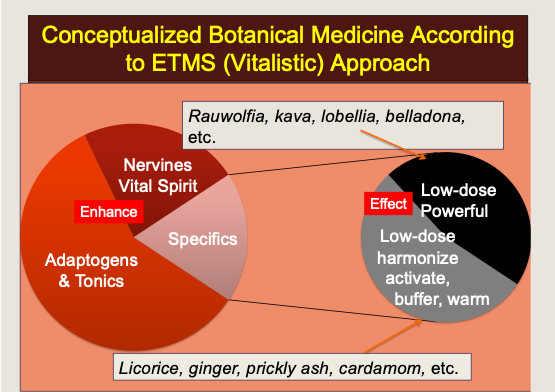
Why I Refer to Plant Medicines as ‘Smarty Plants’
I have a particular affinity for botanical medicines for many reasons. We have co-evolved with plants, and the simple truth is that without plants, we would cease to exist. Plants make an exponentially larger contribution to the Earth’s terrestrial biomass by volume and weight more than all other forms of life combined.[2]
Plants are unique in their structure and function, and they face a number of challenges, which include:
- Engineering their own pollination and seed dispersal,
- Finding food locally, and
- Self-defense (they cannot get out of the way of incoming threats).
Plants have had to adapt and coexist with herbivores and pathogens in their immediate environment that otherwise would overcome and destroy them. They have therefore evolved to produce secondary biochemical pathways that allow them to synthesize various chemicals, often in response to specific environmental stimuli such as herbivore-induced damage, pathogen attacks, or nutrient deprivation. These secondary compounds can be unique to specific species or generalized.
Secondary compounds increase a plant’s overall ability to survive, adapt and overcome local challenges by allowing them to interact with their environment. Some of the roles of secondary metabolites are relatively straightforward. For instance, they play a host of general, protective roles (e.g. as antioxidant, free radical-scavenging, UV light-absorbing, and anti-proliferative agents) and protect the plant against microorganisms such as bacteria, fungi, and viruses. They can also act as defenders of the plant’s growing space against competitor plants.[3]
It is many of these secondary compounds that hold promise for helping us resist and overcome pathogens and disease. We are discovering that when humans ingest these plants and the medicinal extracts made from them, the ability to withstand stress is increased, through protection, adaptation, improved immune response, and epigenetic repair. This is referred to as xenohormesis.
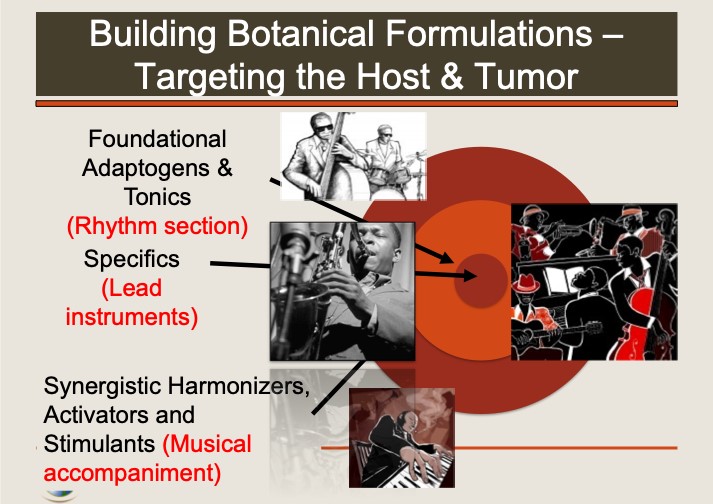
The Many Benefits of Botanicals in Cancer Therapies
In the management of cancer, botanicals (including herbal isolates) have been shown to demonstrate pleiotropic effects, including:
- Altering the microenvironment to optimize the health of the host and not the cancer.
- Directly suppressing cancer by targeting intercellular signal transduction pathways, growth factors, oncogenes, tumor suppressor genes, and telomerase.
- Impeding cancer through selective apoptosis, targeting cancer cells while sparing, protecting, or strengthening healthy cells.
- Inhibiting resistance to chemotherapy and radiation.
Sometimes these effects can be tied to a specific isolated compound, and other times they cannot. Traditional medical science has long recognized that the pathogenesis and progression of diseases are too complex for single drug treatment and that the primary therapeutic effect of traditional herbal medicine is based on the properties of each herb and the strategic combination of herbs.[4]
Originally, Traditional Chinese Medicine (TCM) practitioners used only single herbs for treating disease. Over time, TCM herbalists gained experience from clinical practice and learned that diseases were caused by imbalances among different systems in the body. To restore the dynamic balance among body systems and obtain the optimal curative effect with the least toxic side effects, TCM herbalists chose a combination of several herbs based on the distinct disease presentations and patterns. Throughout this process, the theory of herbal synergism in TCM was developed and refined by herbalists over thousands of years of clinical practice.[5]
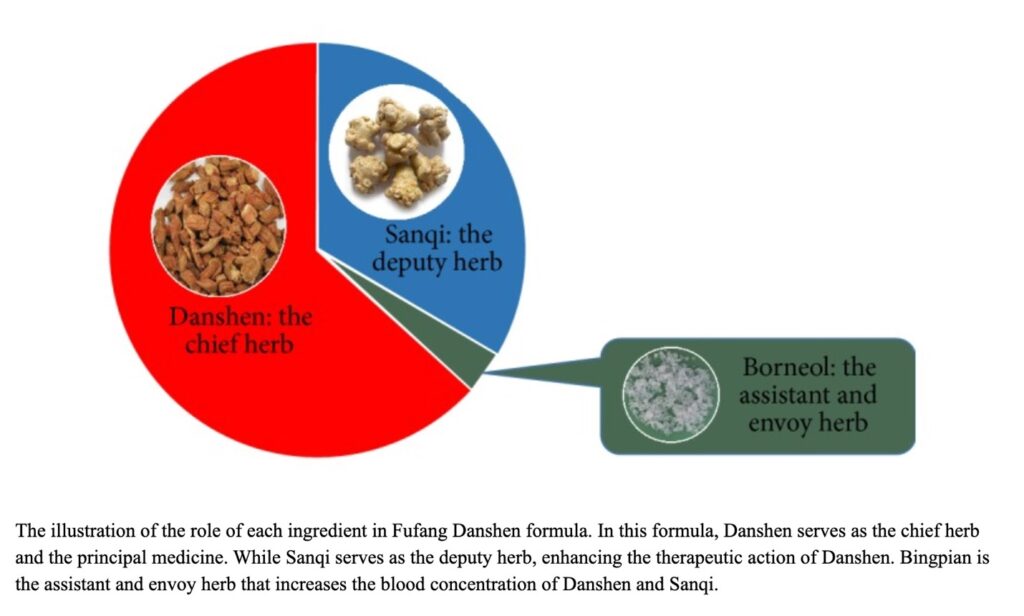
Herb Synergisms Against Cancer: A Review of the Active Phytochemicals, Applications in Animal Models, and Regulatory Aspects
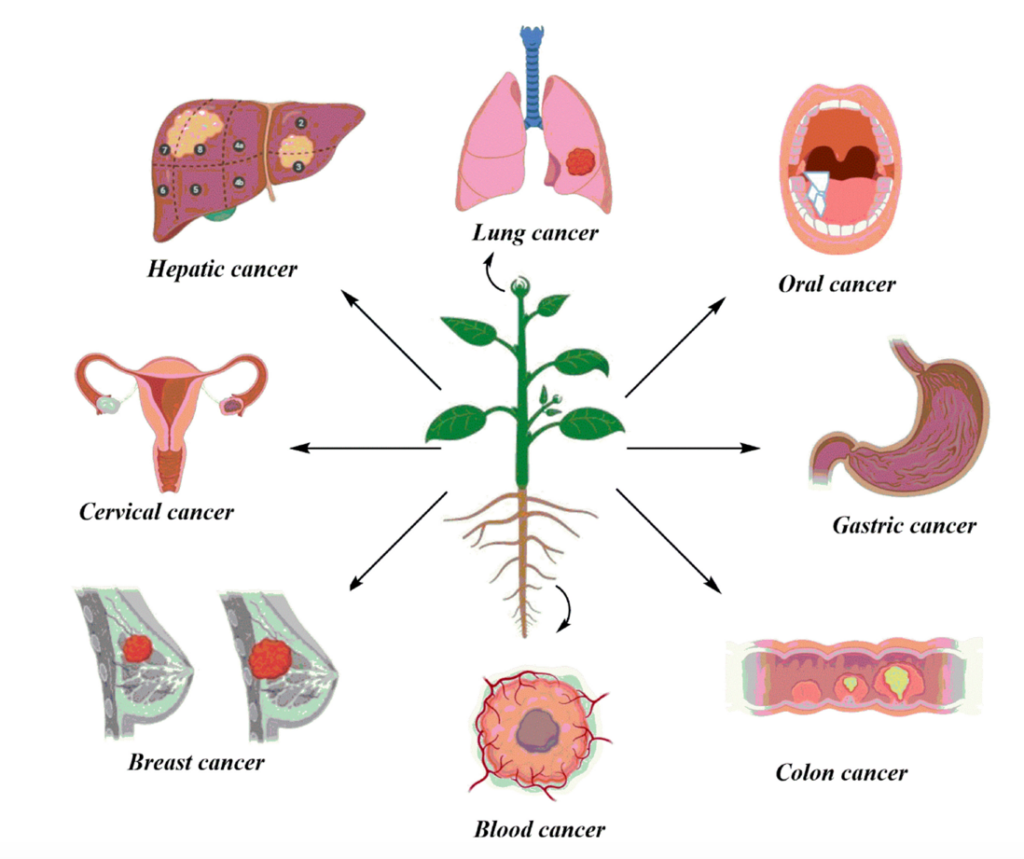
The mechanisms underlying synergistic actions of herbal ingredients are beginning to be understood and reported in scientific literature. Several recently published articles pertaining to synergy research of ethnomedicines or the active compounds derived from them include the verification of synergy effects using modern analytical tools and molecular-biological methods.[7],[8],[9] Results show that the multi-component nature of medicinal herbs makes them particularly suitable for treating complex diseases and offers great potential for exhibiting synergistic actions.
The mechanisms underlying synergistic therapeutic actions of herb medicines are:
- Regulating the same or different target in various pathways, and therefore cooperating in an agonistic, synergistic way,
- Regulating the enzymes and transporters involved in hepatic and intestinal metabolism to improve oral drug bioavailability;
- Overcoming the drug resistance mechanisms of microbial and cancer cells;
- Eliminating adverse effects and enhancing pharmacological potency of agents by “processing” or by drug-drug interaction;1 and
- Enhancing bio-assimilation as a result of combining several herbs.[10]
The longstanding, successful use of herbal drug combinations in traditional medicine makes it necessary to find a rationale for the pharmacological and therapeutic superiority of many of them in comparison to isolated single constituents. Modern molecular-biological methods (including new genomic technologies) enable us to understand the various synergistic mechanisms underlying these effects.
Synergistic effects can be produced if the constituents of an extract affect different targets or interact with one another to improve the solubility and enhance the bioavailability of the extract. For example, a special synergy occurs when antibiotics are combined with an agent that antagonizes bacterial resistance mechanisms. The verification of real synergy effects can be achieved through detailed pharmacological investigations and controlled clinical studies performed in comparison with synthetic drugs.
Current research projects are focusing on the development of a new generation of phytopharmaceuticals, which can be used alone or in combination with synthetic drugs such as antibiotics, and anti-cancer drugs including biologics and chemotherapy. 2 In my clinical practice, I have consistently observed that specific herbal formulations together with synthetic drugs are superior in every way to synthetic drugs alone.
Synergy occurs through pharmacokinetic and/or pharmacodynamic interactions.3 Because botanicals contain a variety of organic chemical complexes, they usually act on multiple targets. I consider this to be a significant benefit—for example, a potential advantage of herbal-compound-synergy is that they may act through multiple pathways and thus, reduce the development of resistance by cancer cells.[11]
Herbal extracts and herbal compounds target molecular pathways both distinct from and in common with cancer drugs, thus having the potential to enhance their therapeutic effects. Herbs contain a large variety of active phytochemicals such as carotenoids, flavonoids, ligands, polyphenolics, terpenoids, sulfides, lignans and plant sterols. These phytochemicals show more structural diversity, bioactivity and complexity than compounds in synthetic drug libraries, and have the ability to inhibit some targets considered “undruggable,” such as protein-protein interactions. The mechanisms of action of phytochemicals are inherently biologically relevant since they are mostly secondary metabolites or signaling molecules.[12]
The synergistic effect herbal medicines can provide to cancer drugs is illustrated below by the combination of the natural compound artemisinin (from Artemisia annua) and the biological drug Imatinib (Gleevac).5
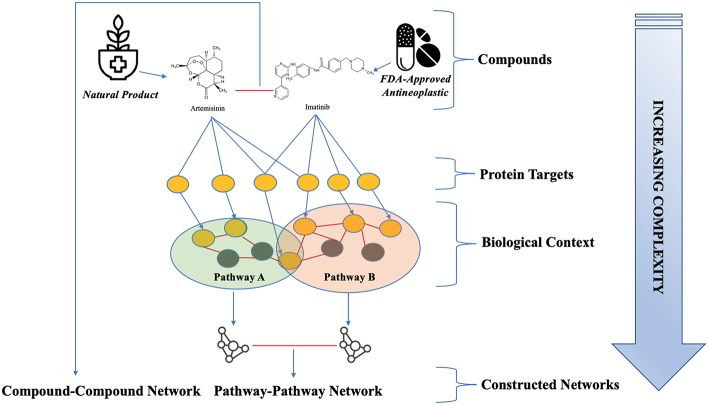
Abundant evidence shows the beneficial effects of flavonoids, carotenoids, phenolic acids, and organosulfur compounds affecting a number of cancer-related pathways. These natural compounds may positively affect processes of cell signaling, cell cycle regulation, oxidative stress response, and inflammation.[13]
Cancer stem cells (CSCs) are characterized as a subpopulation of cancer cells with aberrant regulation of self-renewal, proliferation or apoptosis leading to cancer progression, invasiveness, metastasis formation, and therapy resistance. Anticancer effects of natural compounds are also uniquely directed to target CSCs, which chemotherapy does not.[14]
As one of the classical traditional Chinese medicine (TCM) prescriptions in treating gynecological tumors, Guizhi Fuling Decoction (Cinnamomi Ramulus, Poria, Radix Paeoniae Rubra, Cortex Moutan, and Persicae Semen) has been used to treat breast cancer. Results of gene ontology biological process analysis indicated that those targets were involved in multiple biological processes including:
- Regulation of apoptotic process
- Oxidation–reduction process
- Positive regulation of gene expression
- Xenobiotic metabolic process
- Response to estradiol
- Positive regulation of nitric oxide biosynthetic process
- Response to toxic substance
- Response to ethanol
- Positive regulation of protein phosphorylation.

The Role of Bioavailability Enhancers
Many of the most common herbs used in formulating act as ‘bioavailability enhancers.’ A ‘bioenhancer’ is an agent capable of enhancing bioavailability and bio-efficacy of a compound with which it is combined, without any typical pharmacological activity of its own at the dose used. Many herbal compounds including quercetin, genistein, naringin, sinomenine, piperine, glycyrrhizin and nitrile glycoside have demonstrated capability to enhance bioavailability.[16]
The concept of ‘bioavailability enhancers’ is derived from traditional Ayurvedic medicine. In Ayurveda, black pepper (Piper nigrum), long pepper (P. longum) and ginger (Zingiber officinale), a combination of herbs collectively known as ‘trikatu,’ is used to enhance digestion and to promote assimilation.[17]
In creating herbal formulas, I almost always use small amounts of ginger, licorice, and/or black pepper extract. I use licorice in many formulations in very low doses as a harmonizing herb, and in specific cases in higher amounts as a tonic for the adrenals when aldosterone levels are low. Licorice also supports the immune system and acts as a gentle demulcent for healing the gut and the respiratory system. Glycyrrhizin is a triterpenoid saponin found in Glycyrrhiza glabra(licorice root). Glycyrrhizin has been shown to possess potent absorption enhancing activity.[18],[19]
Another of my favorite natural compounds for enhancing bioavailability is quercetin, a plant pigment (flavonoid) with a wide range of beneficial biological activities. Quercetin has been shown to have antioxidant, free radical scavenging, anti-inflammatory, anti-allergenic, anti-atherosclerotic, anti-tumor and anti-viral effects.[20] In addition, quercetin has been shown to increase the bioavailability and efficacy of a number of natural compounds including epigallocatechin gallate, from green tea extract.[21],[22]
Crafting a True Holistic Approach
There are significant differences between the actions of drugs and that of botanical medicines, which are often standardized to an active isolated compound, or group of compounds. Drugs block, whereas herbs used mindfully within an herbal medicine system suppress, modulate, buffer, or reduce. Drugs act robotically and have no flexibility or cooperative ability, while herbs are positioned to enhance response, normalize, and cooperate with our innate healing ‘Life Force.’ Drugs often have a single action (although some newer cancer drugs target several pathways), whereas herbs can affect hundreds or even thousands of pathways. Drugs, even when used properly, have side effects and toxicity, while herbs have little to no side effects and toxicity when used properly by a professional herbalist. Finally, our genes recognize herbs, whereas drugs are new to our genes and our bodies often struggle with what to do with them and how to properly detoxify them.
There is no doubt that it is a more complex task for the physician to prescribe and monitor botanicals in tandem with drugs. But being able to confidently assess the risk-to-benefit and safely incorporate botanicals allows for a more elegant, comprehensive, and ultimately successful approach to healing and medicine.
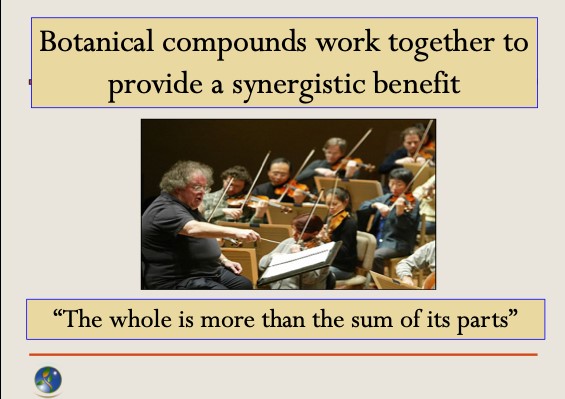
[1] Khan T, Ali M, Khan A, et al. Anticancer Plants: A Review of the Active Phytochemicals, Applications in Animal Models, and Regulatory Aspects. Biomolecules. 2019;10(1):47. Published 2019 Dec 27. doi:10.3390/biom10010047
[2] Pimentel D, Andow DA. Pest-management and pesticide impacts. Insect Sci Appl. 1984;5:141–9.
[3] Kennedy, DO., Wightman, EO., Herbal Extracts and Phytochemicals: Plant
Secondary Metabolites and the Enhancement of Human Brain Function, Plant secondary metabolites and brain function, Downloaded from advances.nutrition.org by guest on January 20, 2011
[4] Su X, Yao Z, Li S, Sun H. Synergism of Chinese Herbal Medicine: Illustrated by Danshen Compound. Evid Based Complement Alternat Med. 2016;2016:7279361. doi:10.1155/2016/7279361
[5] Li S. Network systems underlying traditional Chinese medicine syndrome and herb formula. Current Bioinformatics. 2009;4(3):188–196. doi: 10.2174/157489309789071129
[6] Su X, Yao Z, Li S, Sun H. Synergism of Chinese Herbal Medicine: Illustrated by Danshen Compound. Evid Based Complement Alternat Med. 2016;2016:7279361. doi:10.1155/2016/7279361
[7] Yang Y, Zhang Z, Li S, Ye X, Li X, He K. Synergy effects of herb extracts: pharmacokinetics and pharmacodynamic basis. Fitoterapia. 2014;92:133‐147. doi:10.1016/j.fitote.2013.10.010
[8] Wagner H, Ulrich-Merzenich G. Synergy research: approaching a new generation of phytopharmaceuticals. Phytomedicine. 2009;16(2-3):97‐110. doi:10.1016/j.phymed.2008.12.018
[9] Spinella M. The importance of pharmacological synergy in psychoactive herbal medicines. Altern Med Rev. 2002;7(2):130‐137.
[10] Kang MJ, Cho JY, Shim BH, Kim DK, Lee J. Bioavailability enhancing activities of natural compounds from medicinal plants. J Med Plants Res 2009; 3: 1204-1211.
[11] Sagar SM, Yance D, Wong RK. Natural health products that inhibit angiogenesis: a potential source for investigational new agents to treat cancer-Part 1.Curr Oncol. 2006 Jun;13(3):99-107.
[12] Chamberlin SR, Blucher A, Wu G, Shinto L, Choonoo G, Kulesz-Martin M, McWeeney S. Natural Product Target Network Reveals Potential for Cancer Combination Therapies. Front Pharmacol. 2019 May 31;10:557. doi: 10.3389/fphar.2019.00557. eCollection 2019.
[13] A. Kapinova, P. Kubatka, O. Golubnitschaja, M. Kello, P. Zubor, P. Solar, M. Pec, Dietary phytochemicals in breast cancer research: anticancer effects and potential utility for effective chemoprevention, Environ Health Prev Med. 2018; 23: 36. Published online 2018 Aug 9. doi: 10.1186/s12199-018-0724-1.
[14] Liskova A, Kubatka P, Samec M, Zubor P, Mlyncek M, Bielik T, Samuel SM, Zulli A, Kwon TK, Büsselberg D. Dietary Phytochemicals Targeting Cancer Stem Cells, Molecules. 2019 Mar 4; 24(5).
[15] Dai Y, Qiang W, Yu X, et al. Guizhi Fuling Decoction inhibiting the PI3K and MAPK pathways in breast cancer cells revealed by HTS2 technology and systems pharmacology. Comput Struct Biotechnol J. 2020;18:1121‐1136. Published 2020 May 18. doi:10.1016/j.csbj.2020.05.004
[16] Kesarwani K, Gupta R, Mukerjee A. Bioavailability enhancers of herbal origin: an overview. Asian Pac J Trop Biomed. 2013;3(4):253‐266. doi:10.1016/S2221-1691(13)60060-X
[17] Johri RK, Zutshi U., An Ayurvedic formulation ‘Trikatu’ and its constituents. J Ethnopharmacol. 1992 Sep; 37(2):85-91.
[18] Imai T, Sakai M, Ohtake H, Azuma H, Otagiri M. Absorption enhancing effect of glycyrrhizin induced
[19] Sakai M, Imai T, Ohtake H, Azuma H, Otagiri M. Simultaneous use of sodium deoxycholate and dipotassium glycyrrhizinate enhances the cellular transport of poorly absorbed compounds across Caco-2 cell monolayers. J Pharm Pharmacol 1999; 51: 27-33.
[20] Nijveldt RJ, van Nood E, van Hoorn DE, Boelens PG, van Norren K, van Leeuwen PA, Flavonoids: a review of probable mechanisms of action and potential applications. Am J Clin Nutr. 2001 Oct; 74(4):418-25.
[21] Choi JS, Li X, Enhanced diltiazem bioavailability after oral administration of diltiazem with quercetin to rabbits. Int J Pharm. 2005 Jun 13; 297(1-2):1-8.
[22] Anup K, Sonia G, Swati K, Shrirang N, Waheed R, Vadim I, et al. et al. The studies on bioenhancer effect of red onions and other nutrients on the absorption of epigallocatechin gallate from green tea extract in human volunteers. 2005. p. p. 89. Boston: 2nd International Conference on Tumor Progression & Therapeutic Resistance Proceedings

Thanks, Donnie for another very useful blog. I appreciate your research diligence and clinical insights! Can’t wait to share this with oncologists. Many blessings
Donnie, I always feel smarter after I read your blog–because you communicate really technical information in a way even I can understand. More importantly, I so appreciate your love of humanity and tirelessly searching for ways to combat one of the bigger threats to human’s quality of life. I appreciate you!
There is nothing like this in south east texas.wish they would wake up. I might live a better quality of life in my last days.